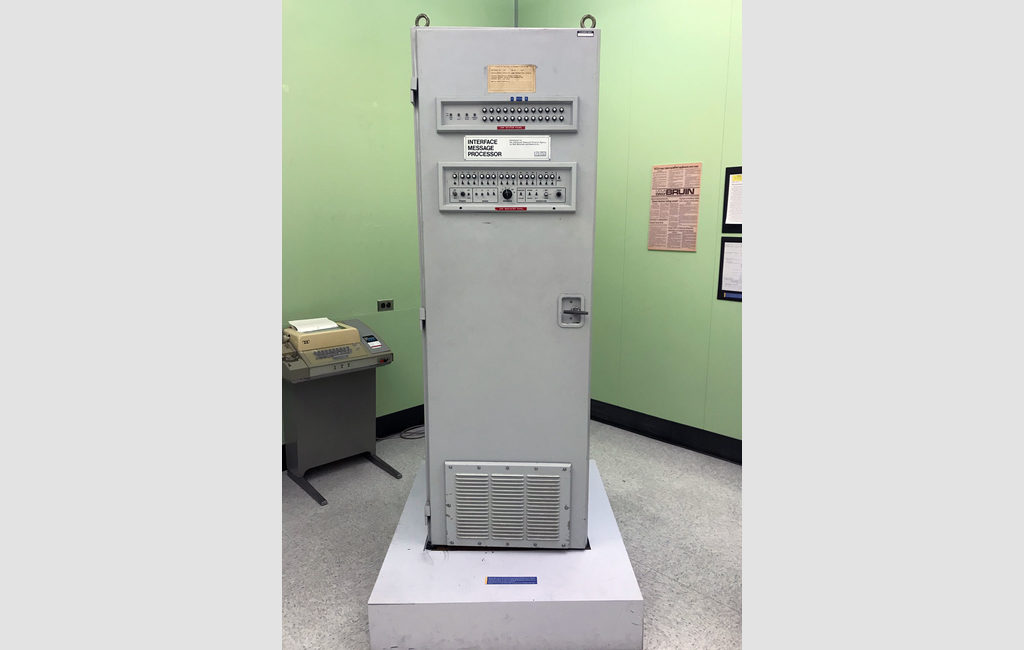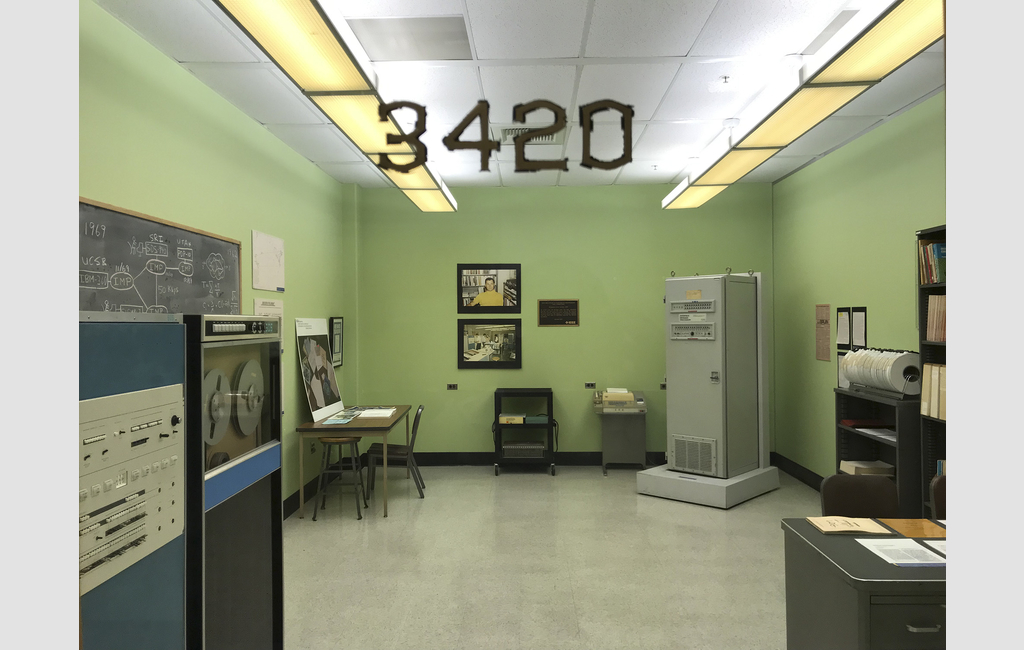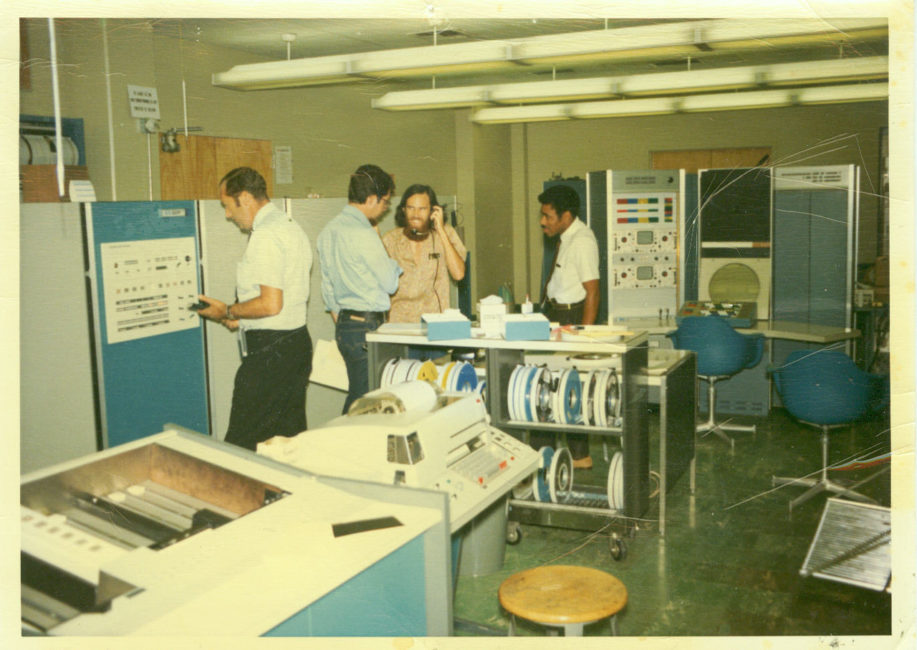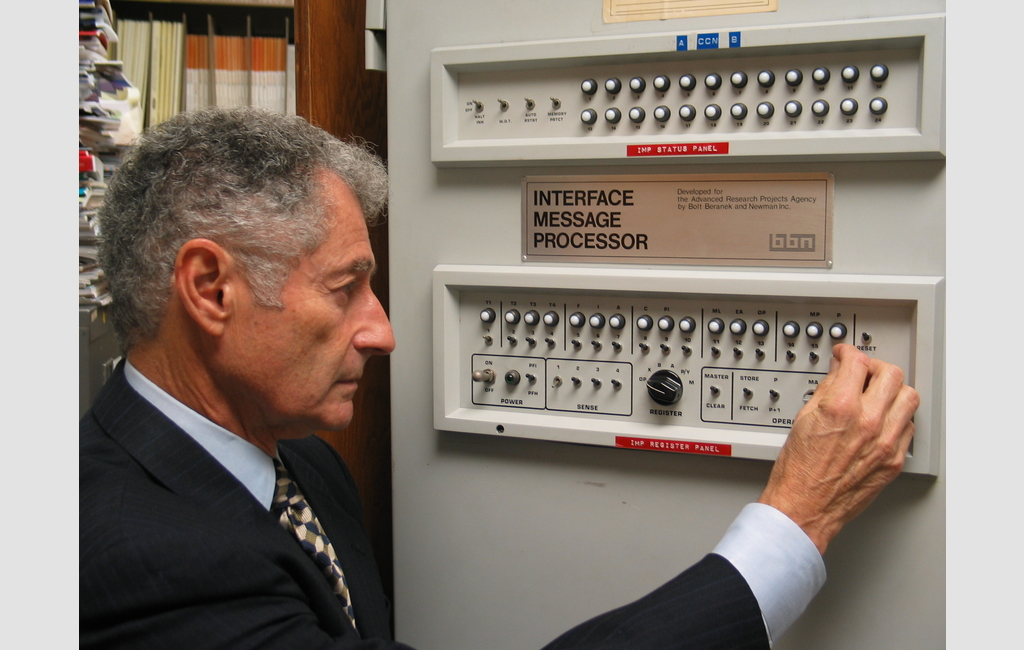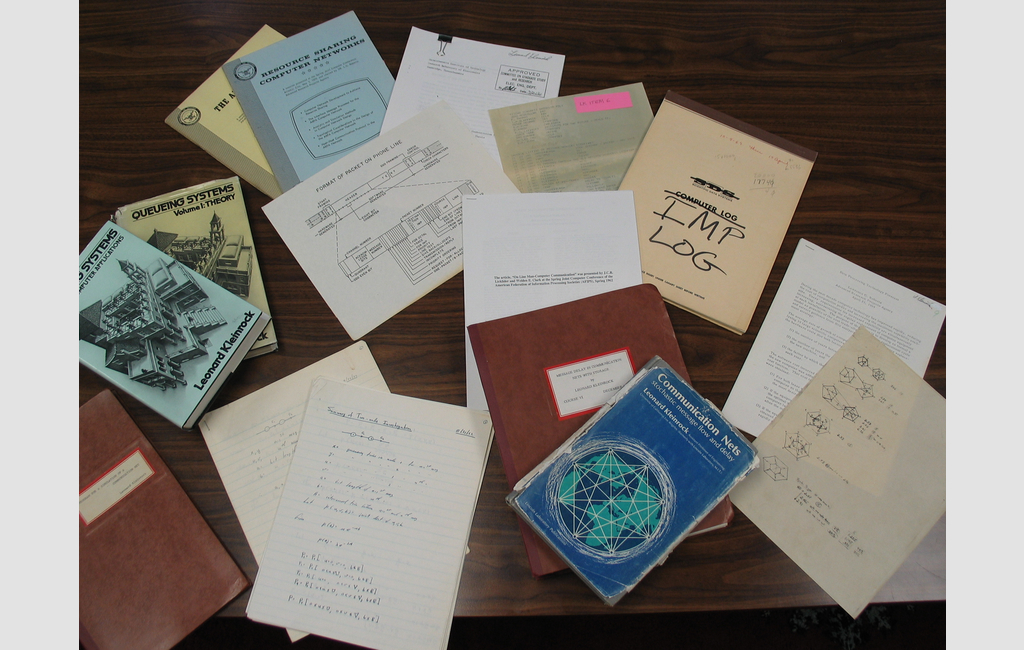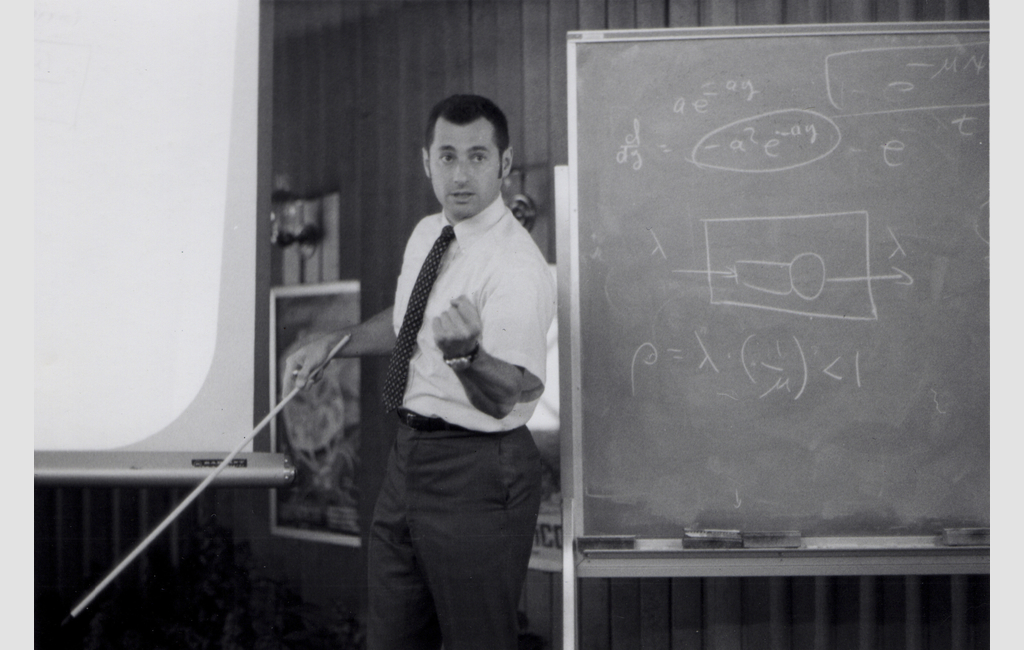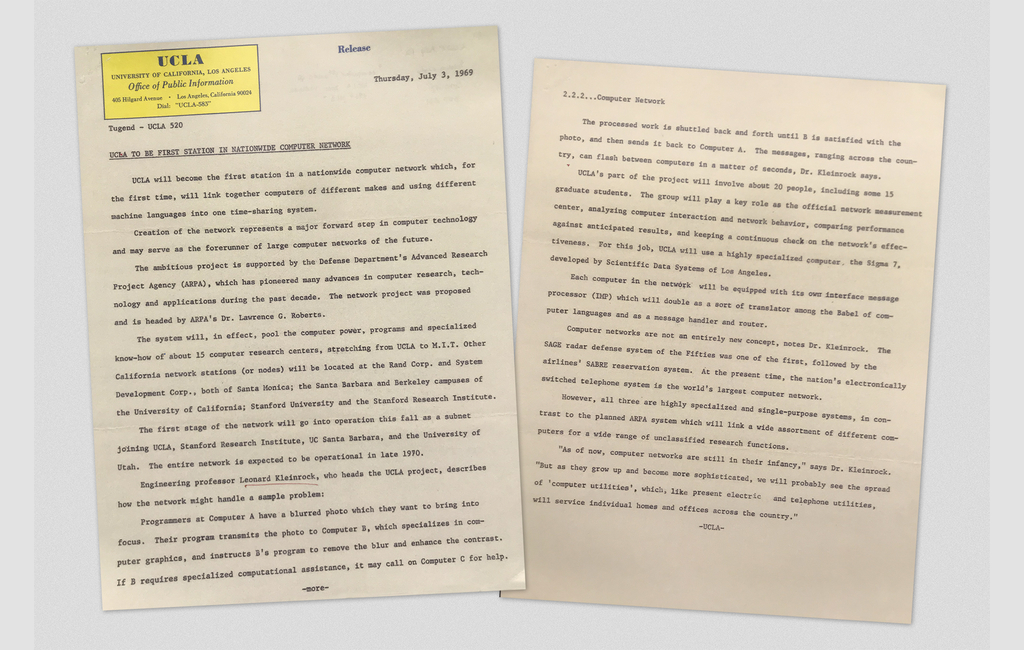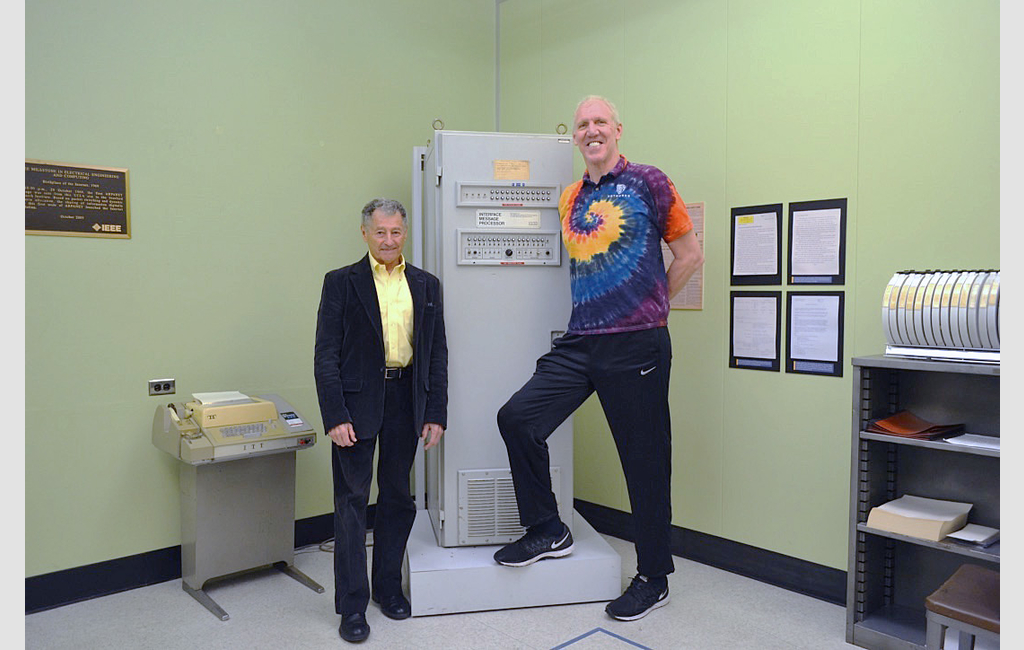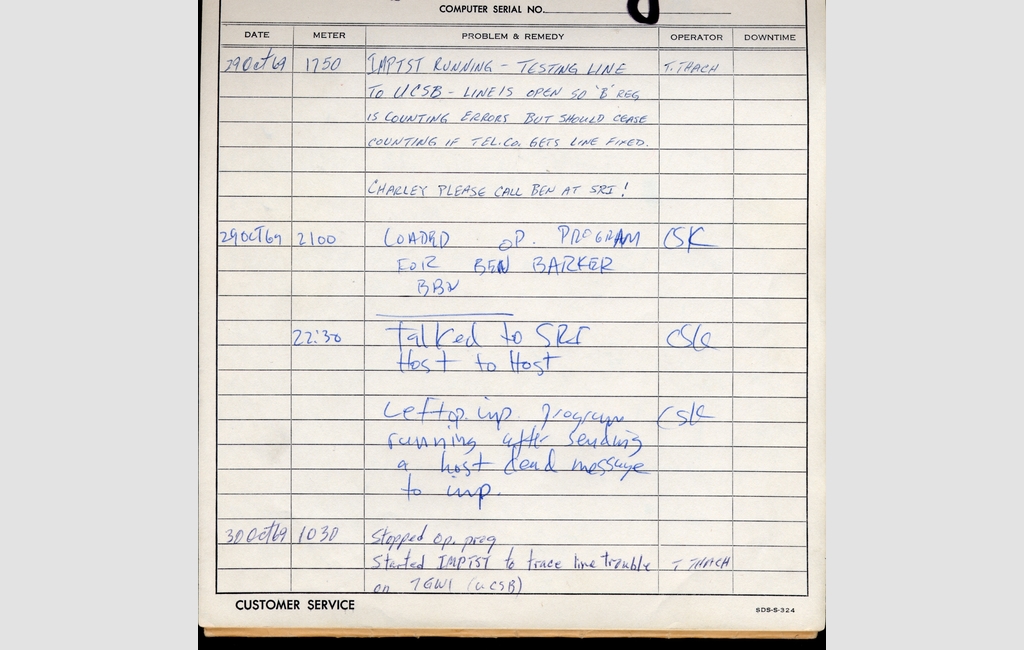3420 Boelter Hall: Where It All Began
On Oct. 29, 1969, a team in an ordinary computer lab at UCLA changed forever the way we interact.
3420 Boelter Hall at UCLA is where the first message was sent over the Arpanet, precursor to today’s internet, to Stanford Research Institute on the evening of Oct. 29, 1969. The message was meant to be “LOGIN.” The researchers managed to type the first two letters before the fledgling system crashed. So, the first message sent over the internet was: “LO,” as in “Lo and behold!” As Dr. Kleinrock said, “We couldn’t have asked for a more succinct, more powerful, and more prophetic message.”
Barely an hour later, the teams tried again—with success. By December 1969, four nodes were permanently installed at UCLA, Stanford Research Institute, University of Utah, and University of California, Santa Barbara. By 1975, there were 57 nodes. By 1981, there were 213. Today, we have more than 50 billion nodes.
The original Interface Message Processor, known as IMP No. 1, the equivalent to today’s router, still proudly stands in 3420 Boelter Hall.
Lo and Behold, Reveries of the Connected World
In 2016, Oscar®-nominated documentarian Werner Herzog (Grizzly Man, Cave of Forgotten Dreams) chronicled the virtual world from its origins to its outermost reaches. Herzog leads viewers on a journey through a series of provocative conversations that reveal the ways in which the online world has transformed how virtually everything in the real world works–from business to education, space travel to healthcare, and the very heart of how we conduct our personal relationships.
It’s about human interaction.
The more than 50 years of history enclosed in this humble room–and the people that designed and started this revolution–helps us understand that the internet was and is still powered by and for humans. When you stand in 3420 Boelter Hall, the location of the first node, it’s a brilliant, bold reminder that people made the internet–and they still do.
